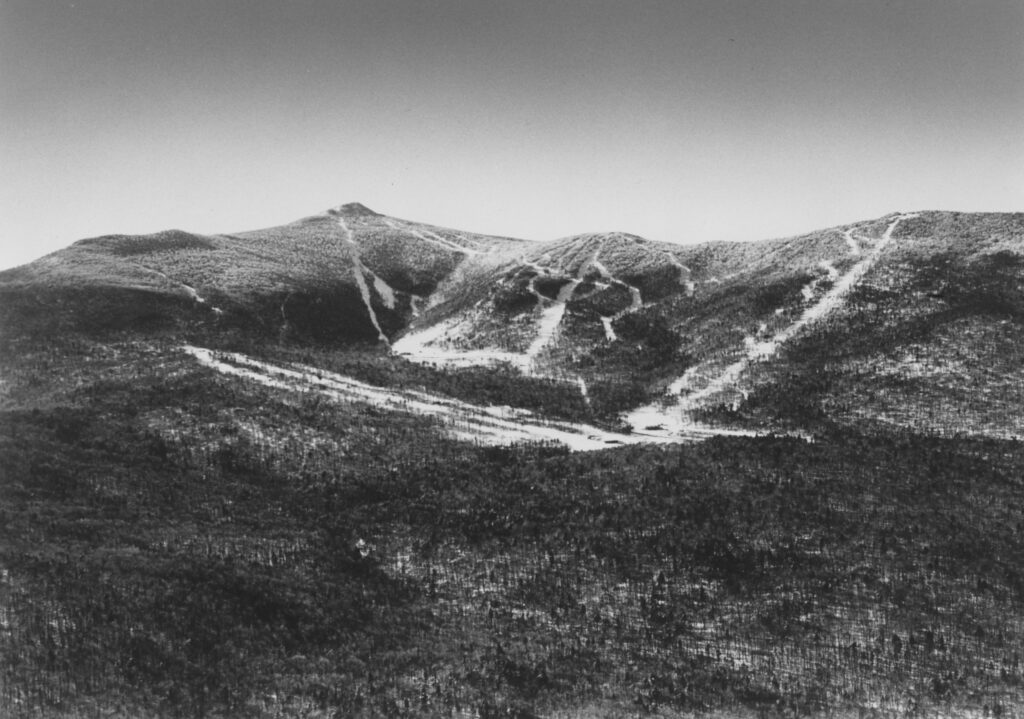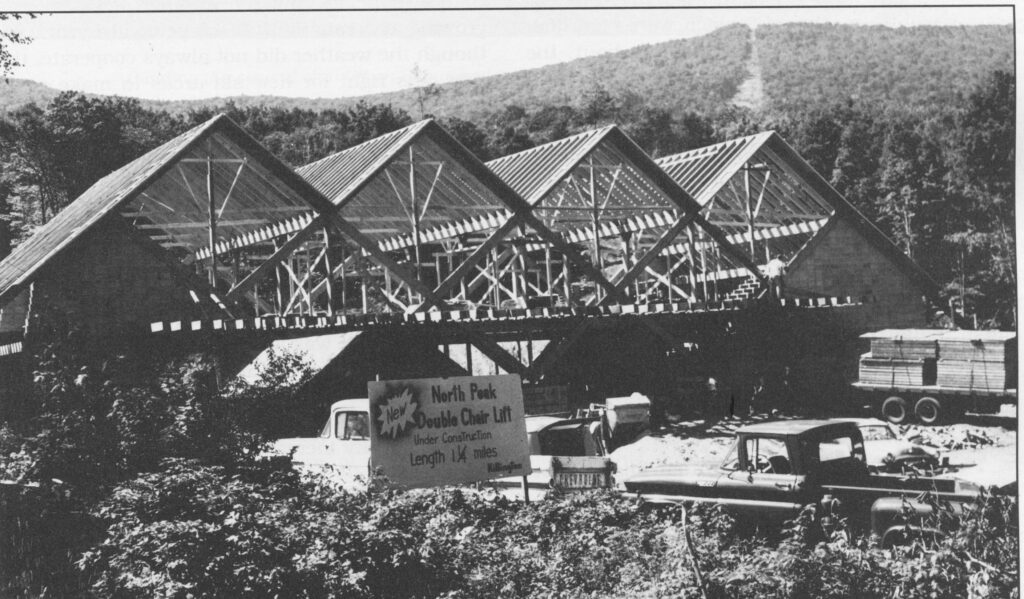By Karen D. Lorentz
Editor’s note: This is part 10 in a series on the factors that enabled Killington to become The Beast of the East. Quotations are from author interviews conducted in the 1980s for the book Killington, A Story of Mountains and Men.
Although Killington was conceived of as a ski area dedicated to experienced skiers, Snowshed recognized a new market: first-time skiers, novices, and families. It turned out to be a stroke of genius, but at the time, experienced Vermont ski area operators were shaking their heads at Smith’s “crazy” ideas.
A story told by Walter Morrison illustrates Pres Smith’s dead seriousness in catering to all comers. Morrison suggested, “Killington needed to define a market niche.” In most businesses, including the ski business, this is a sound operating philosophy, but in the case of Killington, a market segment was tantamount to blasphemy!
Smith’s response had been, “What do you mean a market niche? We want everyone!”
On a growth roll
The winter season of 1961–62 proved to be a good one, running from December 2 to April 30 for a five-month total of 150 days. Attendance crossed the 100,000 mark with 118,000 skier visits, and the company realized a net profit of some $35,385 as gross revenues advanced to $388,782, up 78%.
Amidst a season of races and active junior programs, the area held its first Appreciation Day, inviting all Vermonters to a complimentary ski day on February 8 or 9. Smith wanted to afford Vermonters the opportunity to visit the ski area and see what Killington was all about. According to a press release, Killington was “attempting to pioneer a movement that would see other ski area operators pause to show their facilities in hopes of sharing the stimulating facts concerning skiing in Vermont.”
During the summer of 1962, Killington continued to offer chairlift excursions to the peak and embarked on an ambitious $300,000 capital expansion program.
The development of the fourth mountain area, originally called North Peak (elevation 3,610’), expanded existing facilities by some 30–40 %. The 6,600-foot double chair on Rams Head (later changed to Ramshead) serviced a 1,400-foot vertical drop and added intermediate terrain, enhancing the variety of trails already in place. The Ramshead Area also gave Killington its first trails of relatively constant grade of more than a mile and one-quarter in length (Header and Timberline). Connector trails included Vagabond, an intermediate trail to Snowdon, and the Vale, a novice trail from lower Snowdon to Ramshead.
A large 10,000-square-foot Ramshead Base Lodge featured a modern translucent panel design and a unique series of four peaks, symbolic of the four peaks of Killington Basin. About $250,000 was expended on the Ramshead development ($100,000 on the lodge and $150,000 on the mountain), and another $50,000 was spent to improve existing trails, while the state added a parking lot at Ramshead.
As the fifth season began, Killington operated eight lifts, three of which were chairlifts. With a lift capacity of 5,700 rides per hour, the area had doubled its first season capacity and had become the third largest area in the state after four years of operation.
Pres Smith noted at the 1962 annual stockholders’ meeting, “This meeting is particularly exciting to me because I can now see with clarity that Killington will be one of the greatest ski areas in the Eastern United States, something that for me was only a dream seven years ago. Killington continues to build an image of financial success, dependability of snow, and continuous growth.”
The 1962–63 season proved that image accurate. New England enjoyed an excellent winter, and Killington received 267 inches of snow. Attendance skyrocketed to 193,000, and revenues increased 83 % to $710,989. The season ran from December 8 to May 5 for a 148-day total, and net income increased 45 % to $51,236. A day lift ticket cost $5.75 and five days of lift and lessons cost $20.
Growth breeds growth
The reasons for this continued increase in the growth of the area at a pace well above industry trends were set forth in the 1963 Annual Report. They included a growing skier knowledge and acceptance of Killington and the physical attributes of the ski area — high elevation, novice skiing on upper mountain slopes, early snowfall, diversity of terrain, and vast expanse of both potential and developed areas. In addition, the area sported one of the highest lift capacities in the East and good proximity to metropolitan areas.
The establishment of an active public relations department was also cited as a factor. In January 1961, a news and public relations department was established, and the new director, Phil Camp, brought creativity and a penchant for promotion to his public relations and advertising work that, in a short period of time, put Killington on the map. A Playboy shoot garnered Killington preferential publicity spreads in a magazine with good demographics for the ski area, while a segment on the Dave Garroway Show and an “ABC Discovery” television program attracted national attention for the area. This first step toward professional marketing was an early contributing factor to the ski area’s rapid success.
Interestingly, the 1963 report repeated the prior year’s caution that such large increases in gross income (73 % in 1962 and 83 % in 1963) “would someday fall to a point more nearly characteristic of ski industry progress.”
However, increasing affluence and leisure time, accompanied by a burgeoning interest in recreation as healthy exercise, fueled the growth in skiers and skier visits in the 1960s. Baby boomers were entering the sport, and the number of skiers grew 10 to 15 % a year. Although the weather did not always cooperate, the time was right for new ski areas to make rapid gains in skier markets.
Reaping increasing revenues from the popular mountain, Smith and the Sherburne Corporation continued to plow profits back into programs and facilities. The ninth ski lift, another three-quarter-mile double chairlift, was added to Snowshed in 1963, and total lift capacity increased to 6,900 rides per hour for the 1963-64 season. A 6,000-square-foot, two-level modern Snowshed Base Lodge replaced the temporary 1961 shelter, and Killington’s first snowmaking system was installed on Snowshed.
Next week, we’ll explore the pioneering R&D approach that snowmaking triggered. Comments and insights are welcome: email [email protected].

1963 aerial photo with new Ramshead Area on the right and test trail on Skye Peak far upper left.

New Ramshead Lodge with four peaks reflecting skiing on four mountain areas. Seen under construction for the 1963-64 season.




